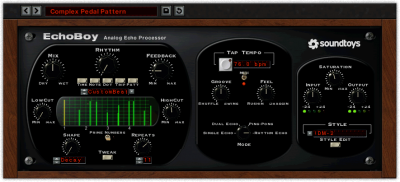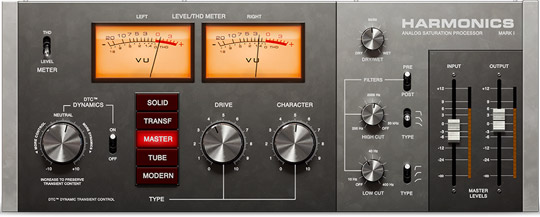

Independent tests on forums have proven to demonstrate aliasing when using Soundtoys Decapitator, but at an inaudible level. This notion was apparently perpetuated by a video in which a YouTuber/engineer tried to explain why digital saturation doesn’t sound good, or doesn’t do what plugin developers say it does. Some users working at the minimum sample rate of 44.1 kHz have evidently reported noticeable aliasing using Decapitator. The system creates ‘ghost’ frequencies in a lower octave, or it will just sound like nothing because these frequencies aren’t being accurately captured and recorded. Aliasing is a type of artifact created by digital recordings systems when a signal above half the sample rate is generated. There’s been a bit of an online frenzy in recent years regarding aliasing and the Soundtoys Decapitator. Pentodes deliver odd harmonic distortion, so they sound different compared to triodes. This style models an overdriven pentode tube, which is commonly used in the output stage of guitar and other amplifiers. P: Modeled after the Thermionic Culture Culture Vulture pentode setting.

Triodes add even harmonic distortion to the signal and are usually in the preamp section of a guitar amp, for instance the sound is punchy with an attitude. The Culture Vulture was the first dedicated studio distortion device.
T: Modeled after the Thermionic Culture Culture Vulture triode setting. The 1057 was built around Germanium transistors (like fuzz pedals), so they have a distinctive sound, especially on guitars. This is an early Neve with a very unique character compared to the ubiquitous 1073. N: Modeled after the Neve 1057 input channel. The sound is beefy in the lows, and smooth and silky in the highs. E: Modeled after the Chandler/ EMI TG Channel, based on classic EMI consoles. The character you get from this emulation is smooth. The 350 tape machine was a studio fixture throughout the ’50s, and eventually the preamps on these machines were pulled out, re-wired, and used as standalone mic pres. A: Modeled after the Ampex 350 tape drive preamp. And Decapitator does all of that with ease. These days, engineers use saturation in-the-box to add some of that grit back to pristine digital recordings, to increase perceived loudness, to add richness to a signal, or to totally destroy something with distortion. Tubes, transistors, and circuitry being pushed to the limit has been the key ingredient in great-sounding analogue recordings for decades. They know that it’s truly the heart of what makes analogue gear sound so good to people. Part of what makes Soundtoys Decapitator so great is the fact that Soundtoys took the time to really understand saturation. Naturally, there’s a Punish button too, for when you need to take things way over the top… From there, you have a simple Gain control, Low- and High-Cut filters, a Tone knob from dark to bright, and a Mix blend for quick and easy parallel processing. 
Those are the ones that Soundtoys modeled for the A, E, N, T, and P styles in the plugin. Soundtoys then narrowed it down once again to their 5 favorite hardware units.







 0 kommentar(er)
0 kommentar(er)
